That Was Then... Rotel RA820BX (1984)
An ’80s amplifier that still holds up today
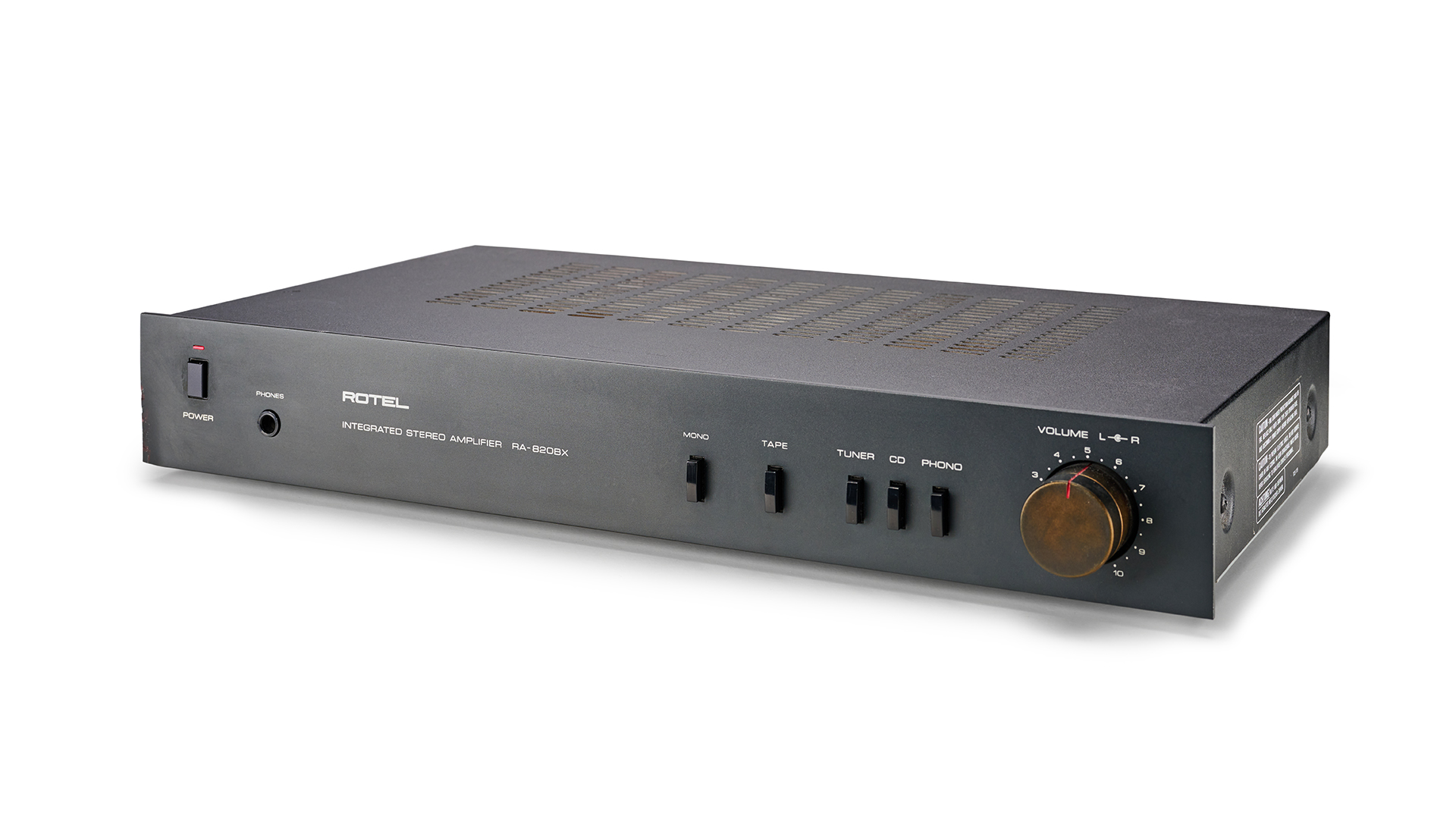
The Eighties were a glorious time for budget integrated amplifiers. Sales (and the resultant profits) were huge, leading manufacturers to fight tooth and nail for a larger piece of the pie. The great news for buyers was an escalation in sonic ability that hasn’t been repeated since. The RA820BX we have here, kindly loaned to us by Rotel UK, is an excellent example of the kind of product made at the time.
However, our story doesn’t start with Rotel at all. It begins with a small, then London-based company called New Acoustic Dimension, better known as NAD. In the late Seventies, NAD launched the now legendary 3020 integrated amplifier. This was an unassuming thing with basic features and a fairly flimsy build. The amplifier was unexceptional in most regards apart from the fact that it was affordable, and sounded great. How affordable? Looking back through What Hi-Fi?’s archives we find that it sold for a modest £71 in 1979.
The 3020 was designed to drive real speaker loads rather than just produce great figures in lab tests, and managed to deliver a blend of warmth, boldness and musicality that impresses even today. It took the market by storm but it wasn’t long before every rival manufacturer had its own contender.
Most fell short of the performance standards set by the NAD. Rotel’s original RA820 was one that didn’t. It mirrored NAD’s no-frills approach but added a more substantial build quality and a tauter, analytical sound. History shows that the RA820 succeeded brilliantly, and in the process established Rotel as a major force in the market.
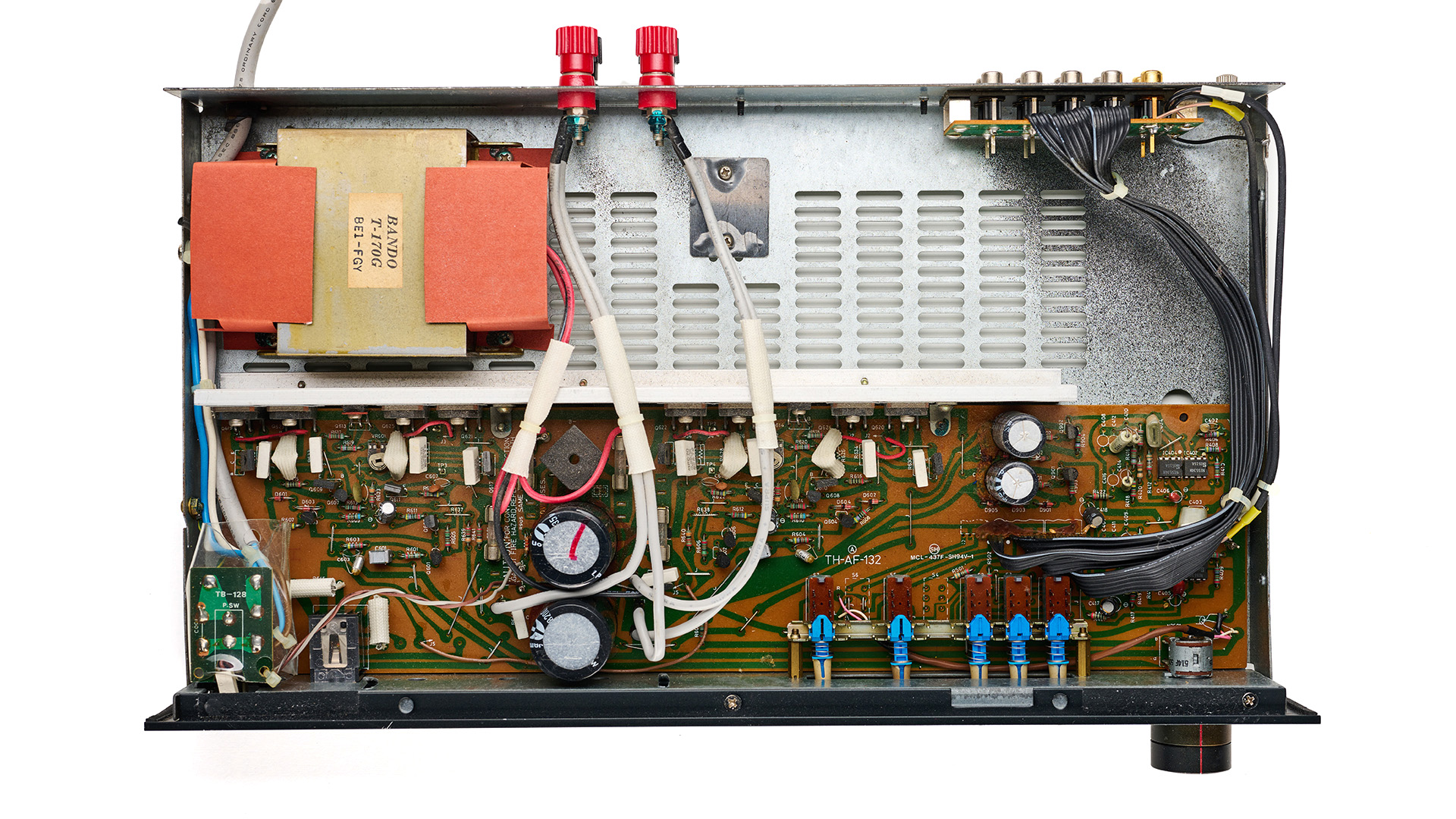
But, this was a time when no manufacturer could stand still and bask, so within a short few years that original RA820 spawned the more purist RA820B and then the RA820BX we have here. At each step the signal path was made a little cleaner, its features reconsidered (tone controls and speaker switching went early on) and component quality improved. The move to improved internal components was particularly significant in the jump from the RA820B to the BX model. There are numerous changes from better quality capacitors and uprated output transistors to improved internal cabling. The removal of the rather grotty spring speaker terminals for proper 4mm binding posts was also welcome.
Rotel continued to develop the RA820 amplifier along purist lines for a few more years after, until the market demand switched to wanting improved flexibility and features. The company duly obliged while trying to maintain high performance levels. Regular amplifier award wins through the 1990s and 2000s shows that to be the case.
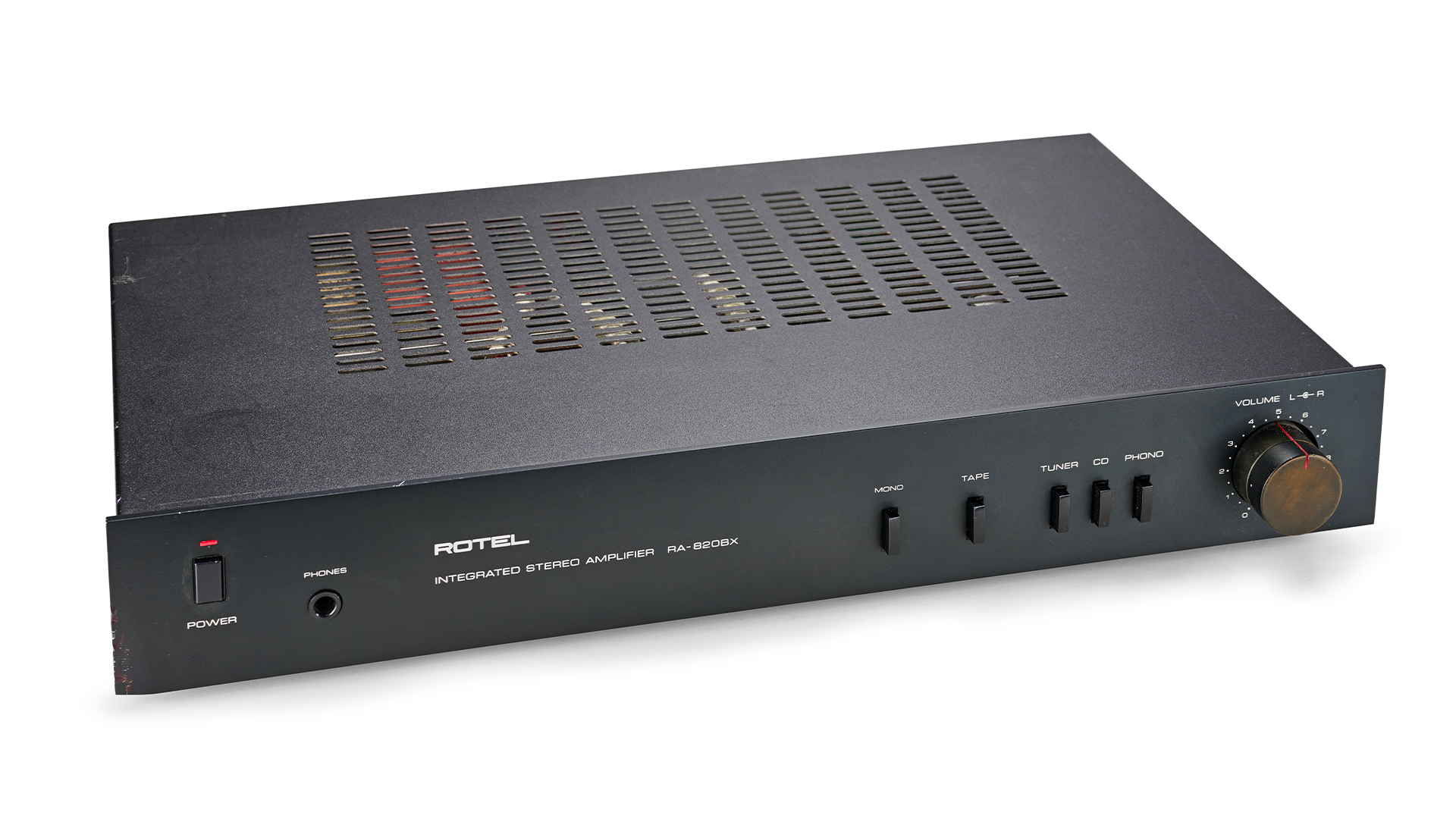
How does the Rotel RA820BX perform by today’s standards? Surprisingly well, we think. This amplifier cost £130 (around $157 / AU$228) when it was introduced in 1984, which puts it anywhere between £390 (around $472 / AU$684) and £535 (around $647 / AU$938) in today’s terms (depending on which online inflation calculator we use). That price puts it firmly in Rega io territory, and the comparison is fascinating.
The latest hi-fi, home cinema and tech news, reviews, buying advice and deals, direct to your inbox.
Surprisingly, given the passing of almost four decades, there is little difference in specification between RA820BX and the five-star Rega io. Both are simple stereo amplifiers with relatively low power outputs; the Rotel is rated at 25 watts per channel into 8 ohms while the Rega takes that up to 30 watts per side – a marginal difference at best. Connectivity is basic with just two line level inputs, a moving magnet phono stage and a headphone output in either case. The io gains an extra point for having remote control operation but doesn’t have the Rotel’s balance control. Overall though, these features should be adequate in the context of the systems these amplifiers are likely to find themselves.
There is little in it when it comes to build quality. Both are solid, though the Rega’s extensive use of plastic makes it feel cheaper. The Rotel also has an advantage in terms of control feel, with both the volume dial and front panel switches operating with more precision than the io’s counterparts.
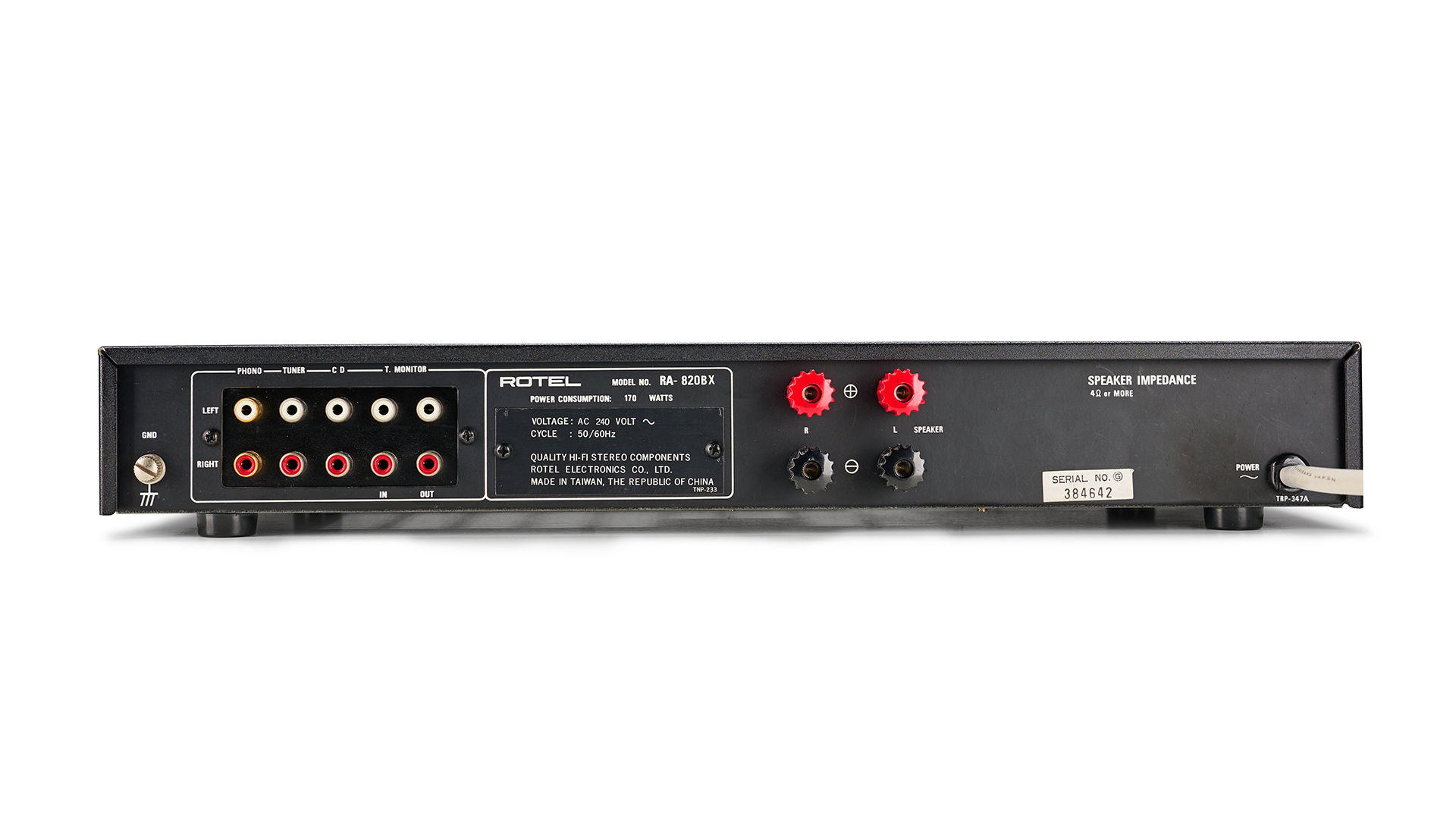
We try both integrated amps with a range of products from our reference set-up of Naim ND555/555 PS DR music streamer, Technics SL-1000R record player with Vertere Sabre MM cartridge, and ATC SCM 50 speakers right through to a Rega Planar 3 turntable and Wharfedale Diamond 12.1 standmounters. It is interesting to note that the Rotel could well have been partnered with an early generation Planar 3 turntable and Diamond speakers when it was originally introduced.
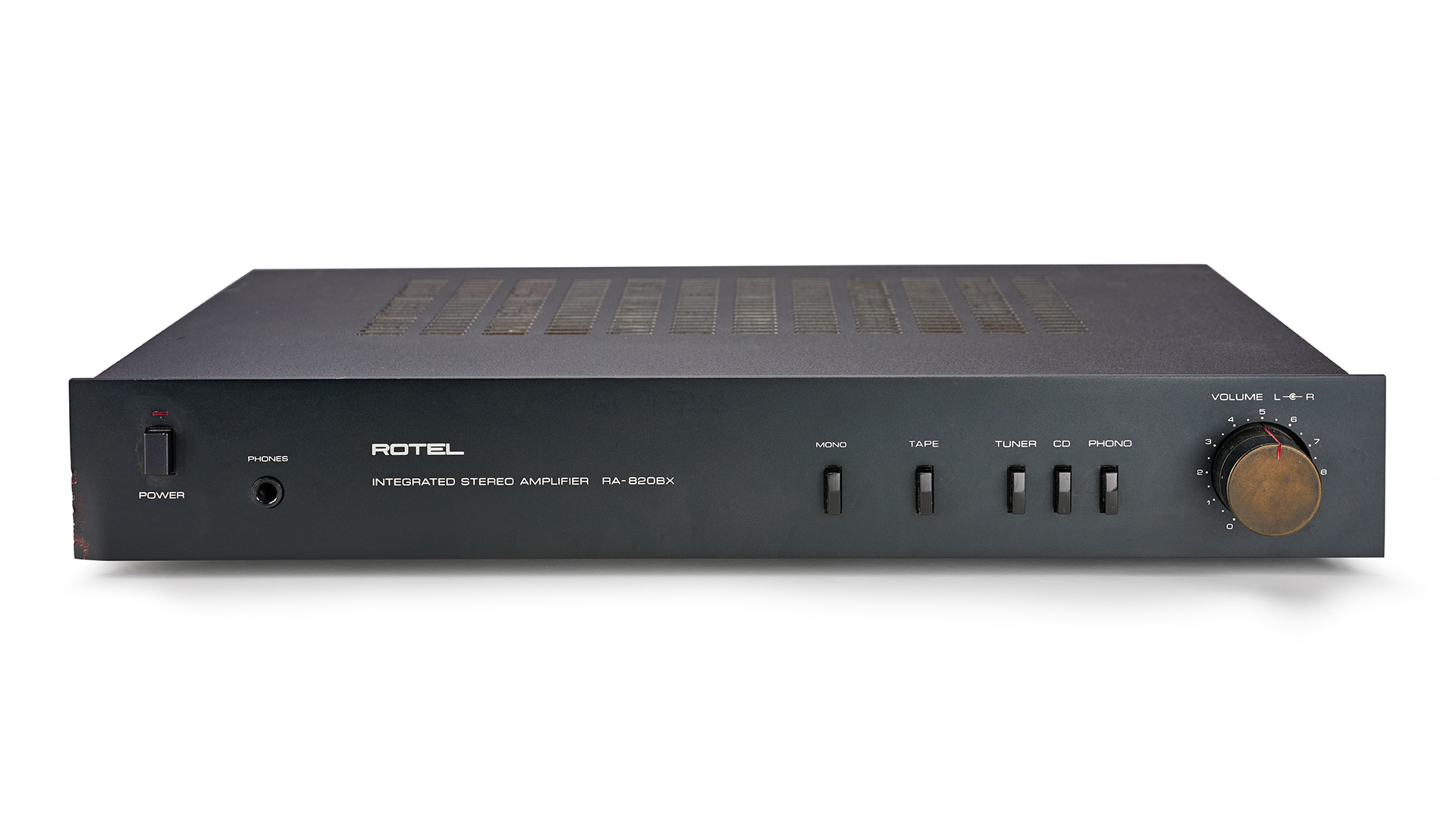
How does the Rotel RA820BX sound today? It remains a fine amplifier. Once given a few days to settle, its presentation changes from being slightly opaque and dynamically constricted to something far more expressive. Even by today’s standards, this feels like a crisp and precise performer. It is fast and punchy, rendering the sound with a sense of openness that’s hugely appealing. We listen to a range of music, from Hans Zimmer’s Interstellar OST to Bob Marley’s Catch a Fire set, and the Rotel copes admirably. We’re struck by its pleasing levels of resolution and the ability to track a multitude of instrumental strands without sounding confused. Or at least it does so right until the point where you push it too hard, then a bit of muddle sets in and dynamics get a little squashed.
Tonally, the Rotel is impressively even. It doesn’t set out to flavour the sound to make it more exciting, rather preferring to take a more balanced and even-handed approach to things. This is something of a family trait that continues in the company’s products to this day. We really like the clarity of the midrange and the quite lovely fluidity the amplifier displays in this region. The top-end is crisp and relatively clean, though falls short of being truly sweet.
We’re pleased to report that the built-in phono stage is a good one. It is reasonably quiet and loses little to the line stages when it comes to overall transparency and balance. Given that vinyl was still the major source of the day this is something we had hoped for. We have great fun listening to the likes of Nick Cave’s The Boatman’s Call and Four Tet’s There Is Love In You – the Rotel gliding between genres with ease.
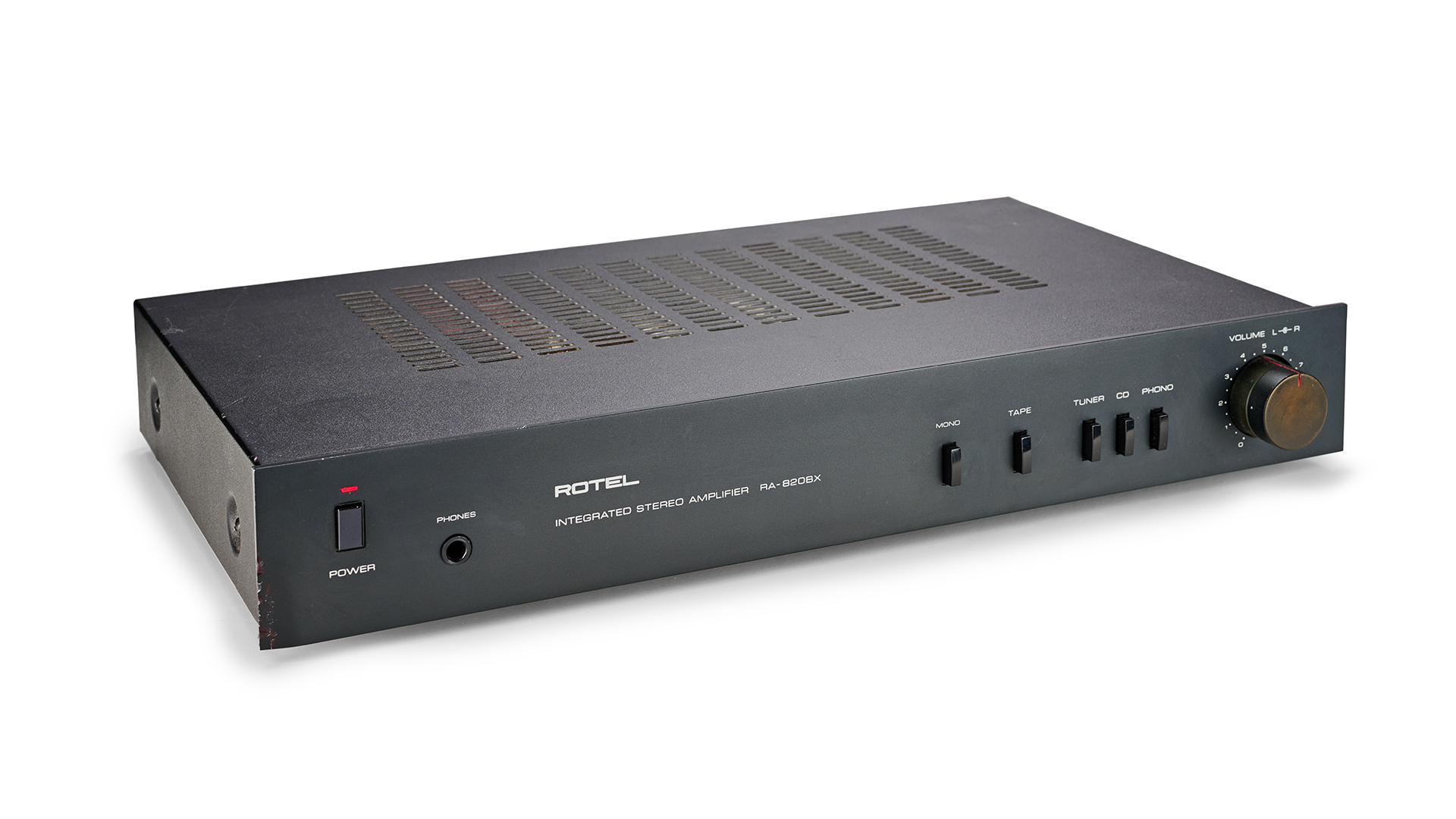
The comparison to Rega’s io is interesting. Regardless of input, the newer amplifier sounds considerably more muscular despite having a claimed power output that’s only marginally higher. Bass notes are deeper and delivered with more authority, which helps to give the overall presentation a richness and solidity that the Rotel just can’t match. The RA820BX sounds lean and lacking in natural warmth in comparison. The io is also better at rendering instrumental textures and dynamic nuances; the qualities vital in communicating the emotion and energy in music.
That isn’t the end of the story though. The little Rega doesn’t get everything its own way, with the Rotel sounding more energetic and spacious. The RA820BX’s leaner balance gives it a sense of articulation and that makes the Rega seem a little pedestrian in the way it goes about things. You’ll need to take more care in speaker matching with the Rotel to make the best of it, though.
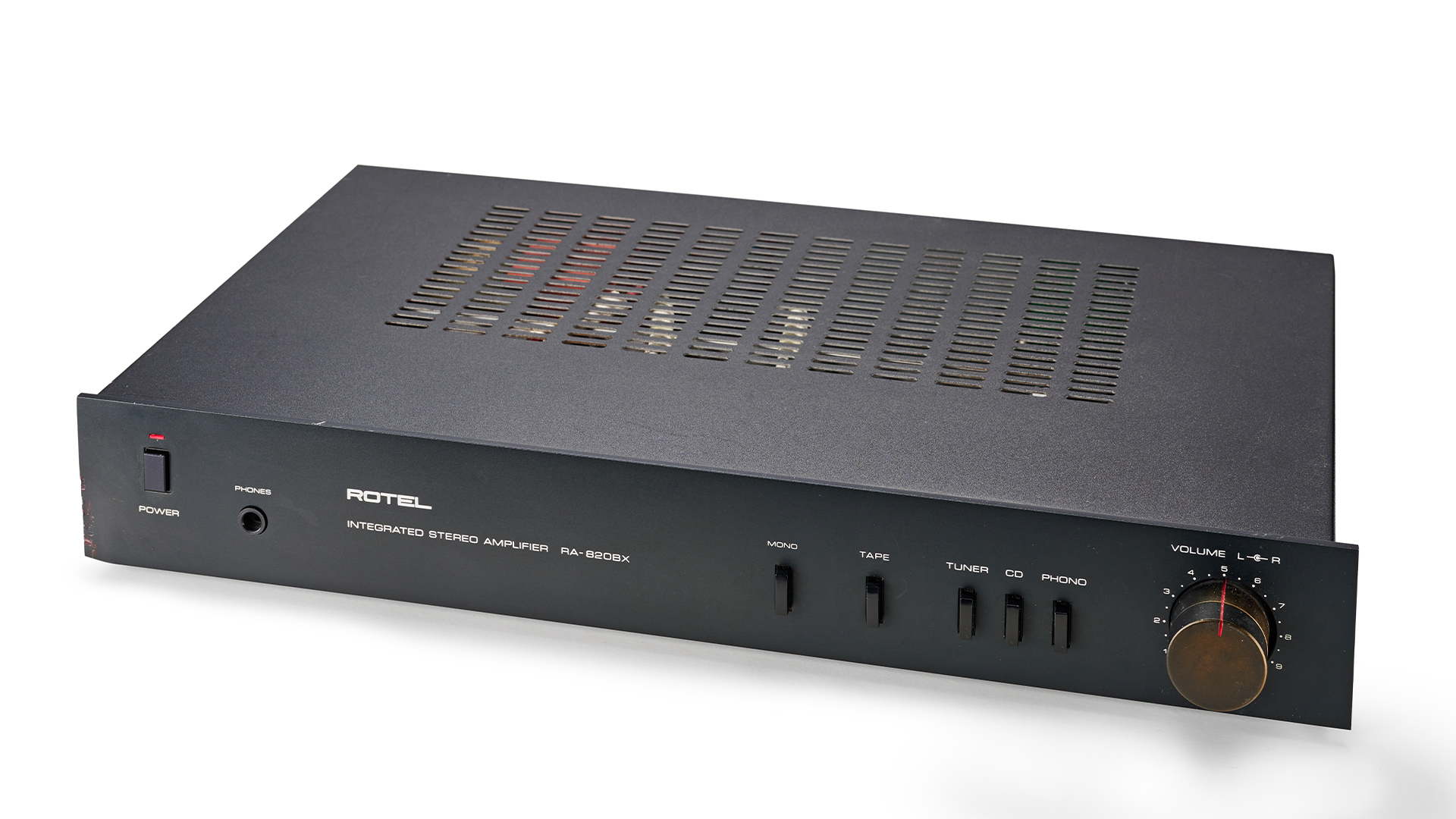
Overall the Rega io takes it, but not by the margin we would have expected. Given that we’ve seen used samples of the RA820BX available for as little as £60 (around $73 / AU$105) we’ve got to admit we’re mighty tempted to buy one. It is great value provided you get a good one.
MORE:
Read the full Rega io review
Here's our pick of the best stereo amplifiers you can buy now
Want more retro tech? Read our retrospectives on the A&R Cambridge A60 and NAD 3020

Ketan Bharadia is the Technical Editor of What Hi-Fi? He has been reviewing hi-fi, TV and home cinema equipment for almost three decades and has covered thousands of products over that time. Ketan works across the What Hi-Fi? brand including the website and magazine. His background is based in electronic and mechanical engineering.
